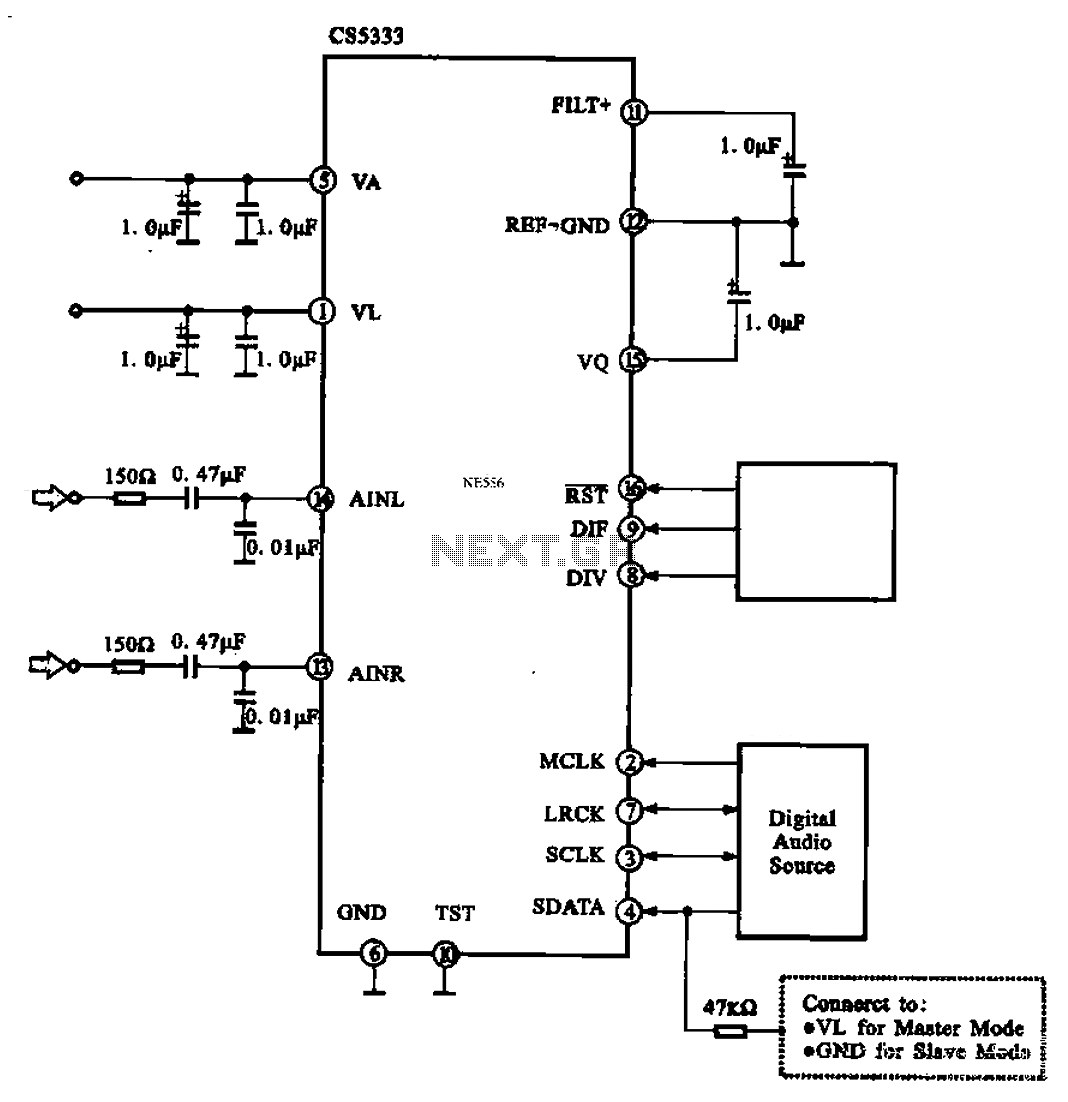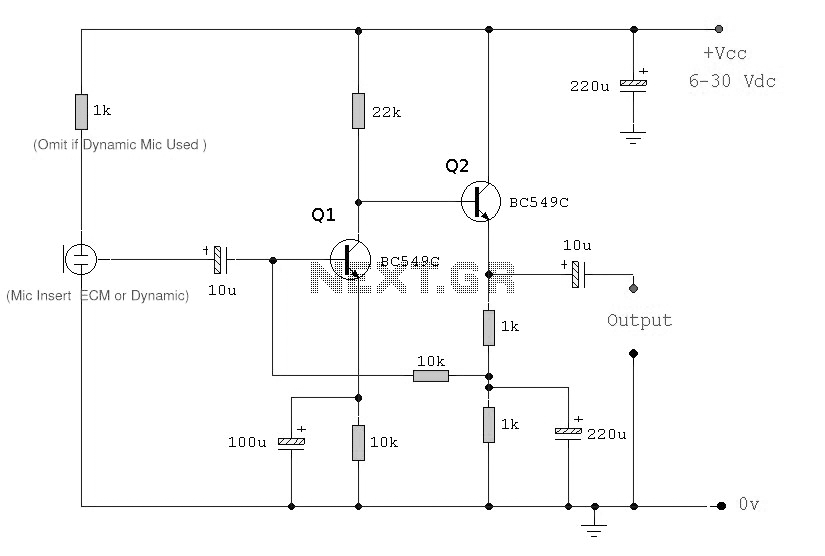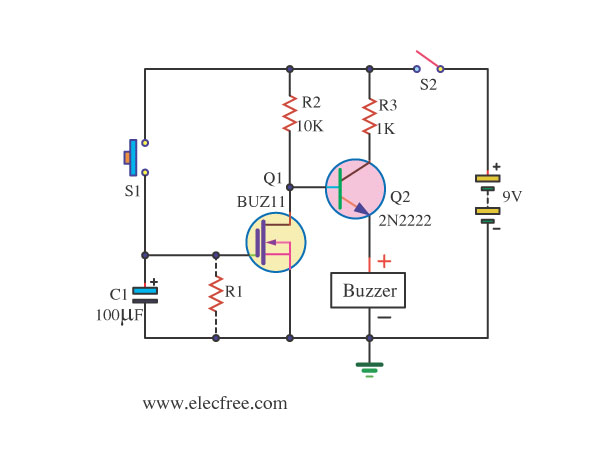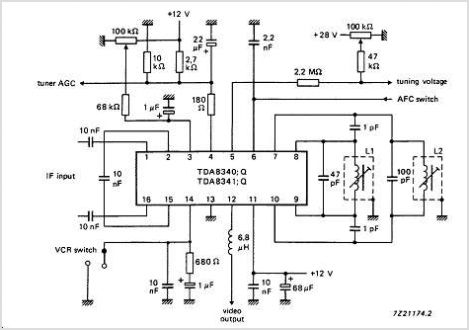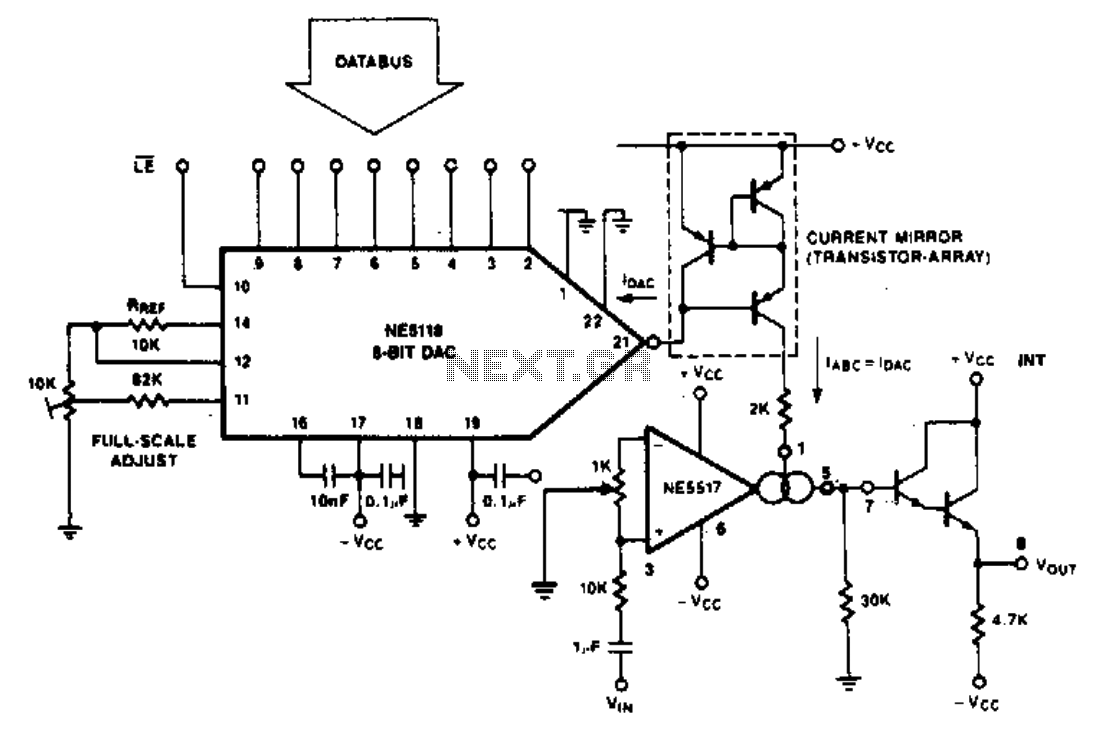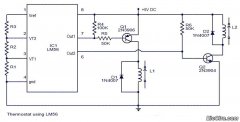
25W Mosfet audio amplifier
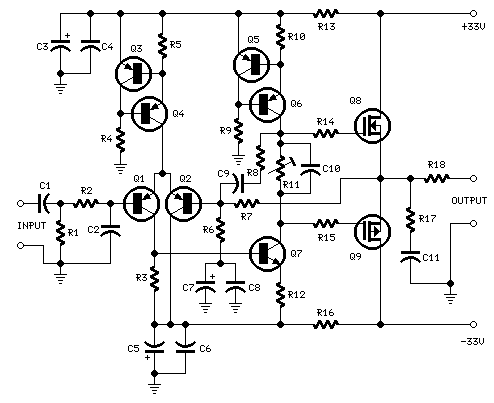
Can be directly connected to CD players, tuners and tape recorders. Simply add a 10K Log potentiometer (dual gang for stereo) and a switch to cope with the various sources you need. Output power: well in excess of 25Watt RMS @ 8 Ohm (1KHz sinewave) Sensitivity: 200mV input for 25W output Frequency response: 30Hz to 20KHz -1dB More: Q6 & Q7 must have a small U-shaped heatsink. Q8 & Q9 must be mounted on heatsink. Adjust R11 to set quiescent current at 100mA (best measured with an Avo-meter in series with Q8 Drain) with no input signal. A correct grounding is very important to eliminate noise.
The described circuit functions as an audio amplifier capable of interfacing directly with various audio sources such as CD players, tuners, and tape recorders. The design incorporates a dual gang 10K logarithmic potentiometer, which allows for stereo volume control, and a switch to select between different audio sources. This flexibility is essential for users who require a versatile audio setup.
The amplifier is specified to deliver an output power exceeding 25 Watts RMS into an 8 Ohm load at a frequency of 1 kHz. This power output is significant for driving typical speakers in home audio applications. The input sensitivity of the amplifier is noted to be 200 mV for achieving the 25 Watt output, indicating that it can effectively amplify low-level audio signals without requiring excessive input voltage.
The frequency response of the amplifier is specified as 30 Hz to 20 kHz with a tolerance of -1 dB. This range covers the full audible spectrum, making the amplifier suitable for a wide variety of audio content, from deep bass to high treble frequencies.
Thermal management is addressed in the design, with specific components requiring heatsinks to dissipate heat generated during operation. Transistors Q6 and Q7 are to be equipped with small U-shaped heatsinks, while Q8 and Q9 require larger heatsinks for effective thermal regulation. Proper thermal management is crucial to maintain performance and reliability, preventing overheating that could lead to component failure.
The quiescent current, which is the idle current flowing through the amplifier when no audio signal is present, is adjusted via resistor R11. It is recommended to set this current to 100 mA, which can be accurately measured using an Avo-meter placed in series with the drain of Q8. This adjustment is vital for ensuring optimal performance and minimizing distortion during operation.
Lastly, the design emphasizes the importance of correct grounding practices to eliminate noise and interference, which can adversely affect audio quality. Proper grounding techniques will ensure a clean and clear audio output, free from unwanted hum or noise artifacts.Can be directly connected to CD players, tuners and tape recorders. Simply add a 10K Log potentiometer (dual gang for stereo) and a switch to cope with the various sources you need. Output power: well in excess of 25Watt RMS @ 8 Ohm (1KHz sinewave) Sensitivity: 200mV input for 25W output Frequency response: 30Hz to 20KHz -1dB
Q6 & Q7 must have a small U-shaped heatsink. Q8 & Q9 must be mounted on heatsink. Adjust R11 to set quiescent current at 100mA (best measured with an Avo-meter in series with Q8 Drain) with no input signal. A correct grounding is very important to elim 🔗 External reference
The described circuit functions as an audio amplifier capable of interfacing directly with various audio sources such as CD players, tuners, and tape recorders. The design incorporates a dual gang 10K logarithmic potentiometer, which allows for stereo volume control, and a switch to select between different audio sources. This flexibility is essential for users who require a versatile audio setup.
The amplifier is specified to deliver an output power exceeding 25 Watts RMS into an 8 Ohm load at a frequency of 1 kHz. This power output is significant for driving typical speakers in home audio applications. The input sensitivity of the amplifier is noted to be 200 mV for achieving the 25 Watt output, indicating that it can effectively amplify low-level audio signals without requiring excessive input voltage.
The frequency response of the amplifier is specified as 30 Hz to 20 kHz with a tolerance of -1 dB. This range covers the full audible spectrum, making the amplifier suitable for a wide variety of audio content, from deep bass to high treble frequencies.
Thermal management is addressed in the design, with specific components requiring heatsinks to dissipate heat generated during operation. Transistors Q6 and Q7 are to be equipped with small U-shaped heatsinks, while Q8 and Q9 require larger heatsinks for effective thermal regulation. Proper thermal management is crucial to maintain performance and reliability, preventing overheating that could lead to component failure.
The quiescent current, which is the idle current flowing through the amplifier when no audio signal is present, is adjusted via resistor R11. It is recommended to set this current to 100 mA, which can be accurately measured using an Avo-meter placed in series with the drain of Q8. This adjustment is vital for ensuring optimal performance and minimizing distortion during operation.
Lastly, the design emphasizes the importance of correct grounding practices to eliminate noise and interference, which can adversely affect audio quality. Proper grounding techniques will ensure a clean and clear audio output, free from unwanted hum or noise artifacts.Can be directly connected to CD players, tuners and tape recorders. Simply add a 10K Log potentiometer (dual gang for stereo) and a switch to cope with the various sources you need. Output power: well in excess of 25Watt RMS @ 8 Ohm (1KHz sinewave) Sensitivity: 200mV input for 25W output Frequency response: 30Hz to 20KHz -1dB
Q6 & Q7 must have a small U-shaped heatsink. Q8 & Q9 must be mounted on heatsink. Adjust R11 to set quiescent current at 100mA (best measured with an Avo-meter in series with Q8 Drain) with no input signal. A correct grounding is very important to elim 🔗 External reference
